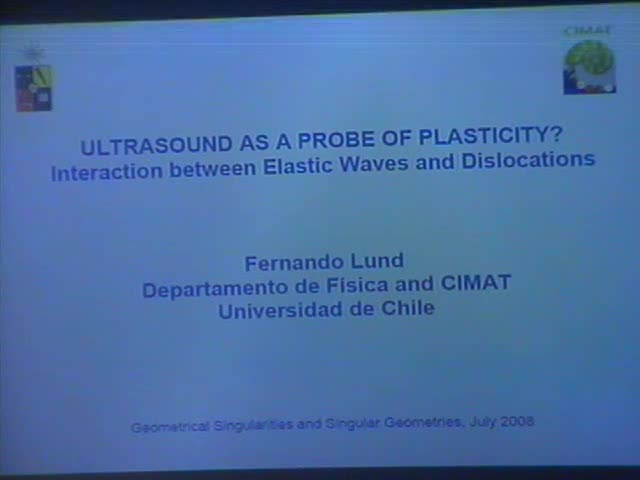Ultrasound as a probe of plasticity? The interaction between elastic waves and dislocations
Presenter
July 23, 2008
Keywords:
- Plasticity
MSC:
- 74C15
Abstract
Plasticity in metals and alloys is a mature discipline in the mechanics of materials. However, it appears that current theoretical modeling lacks predictive power. If a new form of steel, say, is fabricated, there appears to be no way of predicting its deformation and fracture behavior as a function of temperature, and/or cyclic loading. The root of this problem appears to be with the paucity of controlled experimental measurements, as opposed to visualizations, of the properties of dislocations, the defects that are responsible for plastic deformation of crystals. Indeed, the tool of choice in this area is transmission electron microscopy, which involves an intrusive measurement of specially prepared samples. Is it possible to develop non intrusive tools for the measurement of dislocation properties? Could ultrasound be used to this end? This talk will highlight recent developments in this line of thought.Specific results include a theory of the interaction of elastic, both longitudinal and transverse, bulk as well as surface, waves with dislocations, both in isolation and in arrays of large numbers, in two and three dimensions. Results for the isolated case can be checked with experimental results obtained using stroboscopic X-ray imaging. The theory for the many-dislocations case constitutes a generalization of the standard Granato-Lücke theory of ultrasound attenuation in metals, and it provides an explanation of otherwise puzzling results obtained with Resonant Ultrasound Spectroscopy (RUS). Application of the theoretical framework to low-angle grain boundaries, that can be modeled as arrays of dislocations, provides an understanding of recently obtained results concerning the power law behavior of acoustic attenuation in polycrystals. Current developments of instrumentation that may lead to a practical, non-intrusive probe of plastic behavior will be described.
